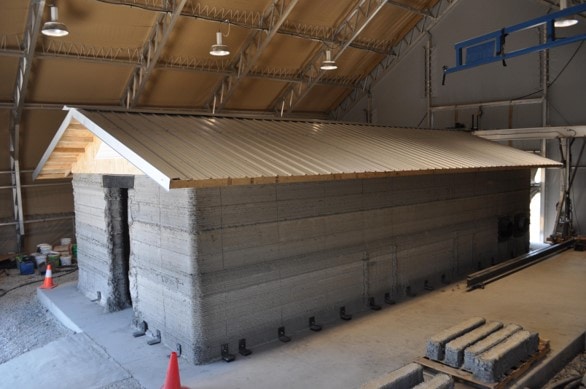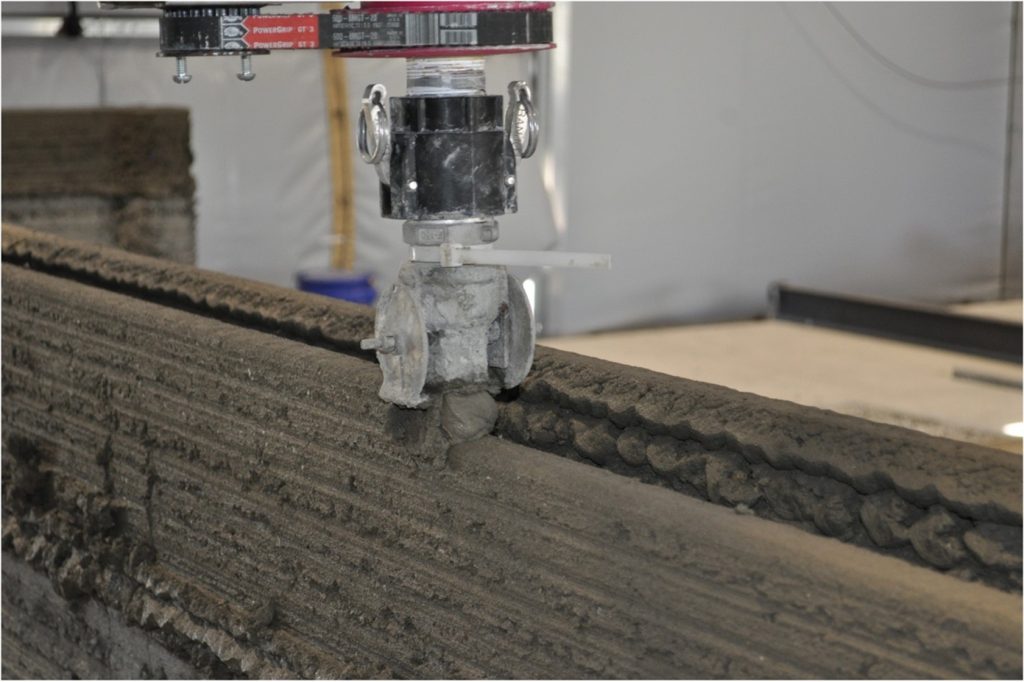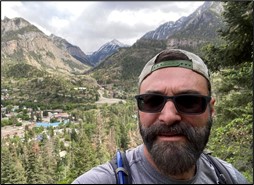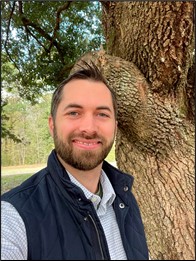Imagine scientists and engineers using 3D printing technology to create nature-inspired structures and to produce more effective, economic, and aesthetically pleasing solutions. In the premier episode of Season 5 of the Engineering With Nature® Podcast, host Sarah Thorne, and Burton Suedel, Research Biologist at the Engineer Research and Development Center (ERDC), are talking with two ERDC colleagues – Alan Kennedy, who is in the Risk Branch of the Environmental Laboratory, and Zackery McClelland, who is in the Concrete and Materials Branch of the Geotechnical and Structures Laboratory.
Al is a Research Biologist, Toxicologist and Macromolecular Scientist, whose 15-year career at ERDC initially focused on ecotoxicity but has expanded dramatically into material science. He studies the safety of engineered nano particles and polymer science through Virginia Tech. Zack is a Mechanical Engineer who focuses on additive manufacturing (AM), which creates objects by adding material layer by layer through computer-aided design. This contrasts with traditional, or subtractive, manufacturing that starts with something larger and chips away at material to create the final product. 3D printing is a subset of the larger AM field. He started with what most think of as typical for AM, building small-scale, high-resolution products, but is excited to move into larger-scale structural applications for Engineering With Nature (EWN). Both Al and Zack highlight the importance of bringing together experts from diverse fields to achieve the desired objectives. Al and Zack also acknowledge their fellow colleagues involved in this work: Mark Ballentine and Andrew McQueen, at the Environmental Lab, and Gaurav Savant, at the Coastal and Hydraulics Laboratory.
Burton notes the opportunity to apply AM to EWN, helping to go beyond the conventional approaches that use steel and rock, to achieve the multiple social, economic, and environmental benefits that are an objective of EWN. “We want to go beyond the demonstration scale because if we can upscale these types of projects, that will lead to greater successes over wider areas of the environment.”

The use of 3D printing unlocks the ability to make complex, overlapping, nature-inspired geometries that are impossible to make with traditional methods. This allows mimicking natural, asymmetric structures, such as coral-like stubs and mangrove roots. As Al describes it, these structures “can provide habitat enhancements and erosion controls, while being aesthetically pleasing in recreational areas. They can also blend and composite synthetic and natural biopolymers. This allows scientists to tune the material’s structure and mechanical properties, as well as its surface chemistry and porosity for whatever the site-specific need or application may be.”

Work in the Geotechnical and Structures Laboratory has focused on developing new concrete mixes, such as ultra-high performance concrete that is 10 times stronger than typical concrete or mixes that use local materials. “All this research we have done on concrete or cementitious materials can now be leveraged for EWN applications. We can incorporate nature-based features into conventional infrastructure solutions using 3D printing. This really opens up the potential for applications of these materials for ecosystem restoration, coastal surge, and flood risk protection.”


Al describes these advances as the natural evolution of collaborative thinking, which is key to ERDC culture: “This is a convergence of multiple, conventional and emerging technologies into a novel synergistic capability.” As for why these technologies are emerging now? “The concepts just seemed to come together as we interacted. It may be related to the reduced costs and improved user friendliness of the 3D printing equipment, plus recent capital investments we’ve made at three ERDC labs.” He adds: “Novel 3D printing technologies that can use natural materials such as sand and clay have the potential to incorporate beneficial use of dredge material as a feed stock for 3D printing. That’s exciting!”
While there are lots of hobbyists, universities, and even companies doing 3D printing, the application at the Army Corps in an infrastructure context is unique; and the potential for beneficial use of dredge material is a real game changer. As Al puts it, “Using natural materials to make natural infrastructure, bringing this to the EWN Community of Practice, will dramatically expand new ideas for 3D printing of nature-inspired infrastructure, revealing opportunities and site-specific needs we haven’t even imagined yet.” One of the goals of work in this area is to make additive manufacturing a mission enabler for novel solutions by creating interagency partnerships and making use of natural materials standard at EWN Proving Grounds. As Zack describes it, “That’s the beauty of additive manufacturing. It’s bringing together all of these different groups that are usually islands and kind of forcing them to work together to better understand the problem as a whole.”
Burton agrees: “By combining the efforts of the Geotechnical Structures Laboratory and the Environmental Laboratories, bringing together the disparate disciplines, we’re going to learn a lot from each other and we’re going be able to accomplish more in this space. From an EWN perspective, there are a lot of applications for this type of research and this type of capability, whether we are on the marine coast, or the freshwater coast, in the Great Lakes, or even in our riverine systems. Applications can be below water, at the water surface with air, or they could be above water and provide benefits to those species that spend all their time above the water surface. There’s a tremendous applicability for this type of capability going forward.”








